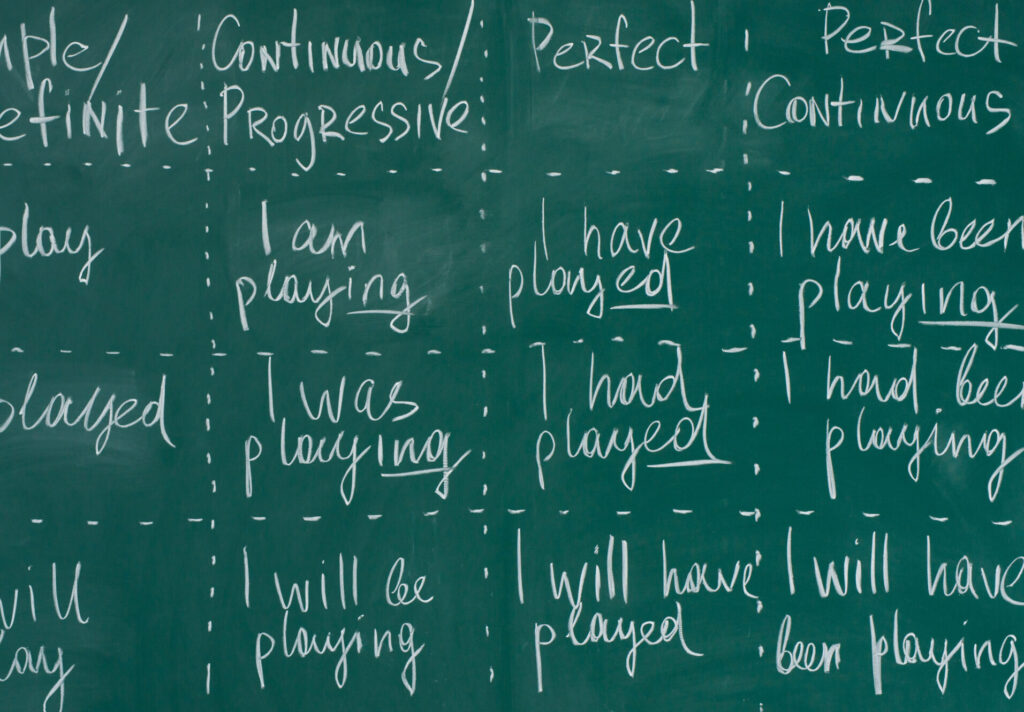
gram·mar |
\ˈgra-mər\
- the study of the classes of words, their inflections, functions, and relations in the sentence
- a system of rules that defines the structure of a language
Putting it together for learners!
Four Views
There are four views on Grammar: functional, descriptive, rhetorical and prescriptive. But what does that mean for ELs and emergent bilinguals? In the end, it means that learners need to have a knowledge of phonology, morphology, syntax, and pragmatics.
Functional
A set of internalized rules that people learn and use to communicate.
So what? Some theorize that this comes naturally over time.
Descriptive
The implicit levels and sets of rules (proposed by Noam Chomsky) that allow people to comprehend, produce and describe language. The surface structure of language output and the deep structure of variations to fit the situation.
So what? The statement, “This is dark chocolate candy” can be changed into a different function by turning it into a question. “Is this dark chocolate candy?” or “This is dark chocolate, right?”
Rhetorical
The way that language is used for different purposes: questioning, narrating, arguing, persuading.
So what? In my experience (me, Shawn Slakk), when I work with students using a mentor text and their own writing, students are more effective and see the purpose of grammar – they start to internalize it.
Prescriptive
Just like it sounds. “Here are the rules for grammar, the names of the parts of speech, and the functions of the parts of speech. You must learn them to get speak and write better; we will test you on them.”
However, researchers have shown (Macauley, 1947; Krashen, 1998; Elley and Barton, 1976; and Braddock and Lloyd-James, 1963) that instruction via grammar translation, kill and drill grammar worksheets or any other explicit grammar for grammar’s sake instruction does not help learners know grammar better. Yes, teachers need to know about grammar, but “teachers should not expect that teaching traditional grammar will improve their students’ speech or writing” (Freeman and Freeman, 2014, p. 234).

Oral Grammar vs. Written Grammar
One Additional View
Oral grammar and written grammar are different. Oral grammar is full of looser sentences, pronouns, incomplete sentences, discourse markers, slang, idioms, oral punctuation and other context-reduced language. To supplement oral grammar, speakers use non-verbal cues like gestures and facial expressions. Listeners are required to fill in the gaps.
So what? Oral grammar makes listening harder and more exhausting. Explicit instruction and practice in listening is critical.
Applications & Activity Examples
Functional
(Check back for more as this is still under construction. Thanks for you patience.)
Descriptive
(Check back for more as this is still under construction.
Thanks for you patience.)
Rhetorical
From a statement! to a question?
Language Objective:
Students will change a statement into the targeted Bloom’s level question in English.
Materials:
a) List of statements from current mentor text or the mentor text.
b) Blooms Taxonomy Table Tent (see hot button)
Activity:
- In pairs, provide students with a list of statements from the current mentor text or content they are reading and discussing.
- Assign each group two levels of Blooms Taxonomy to work with.
- Using the provided Bloom’s Table Tent, students will choose 3-4 statements and turn them into text-based questions.
- When done writing questions, students will need to provide text-based answers.
- Pairs will switch with other team members to bet and review questions.
- When done, hand questions over to the teacher for the following class debriefing.
How would this look using:
Depth of Knowledge?
6 Facets of Understanding
Prescriptive
(Check back for more as this is still under construction. Thanks for you patience.)
References & Resources
Bear, D. R., Invernizzi, M., Templeton, S., & Johnston, F. (2016). Words Their Way: Word Study for Phonics, Vocabulary, and Spelling Instruction (6th ed.). Pearson.
Curzan, A., & Adams, M. (2012). How English works: A linguistic introduction (3rd ed.). Pearson.
Freeman, D. E., & Freeman, Y. S. (2014). Essential linguistics: What teachers need to know to teach ESL, reading, spelling, and grammar. (2nd ed.). Heinemann.
Helman, L., Bear, D. R., Templeton, S., Invernizzi, M., & Johnston, F. (2012). Words their way with English learners: Word study for phonics, vocabulary, and spelling instruction (2nd ed.). Pearson.
Johnston, F., Invernizzi, M., Bear, D. R., & Templeton, S. (2018). Words Their Way: Word Sorts for Letter Name – Alphabetic Spellers (3rd ed.). Pearson.
Lems, K., Miller, L. D., & Soro, T. M. (2017). Building literacy with English language learners (2 ed.). Guilford.
Questions? Wonders? Reach out with this form.
